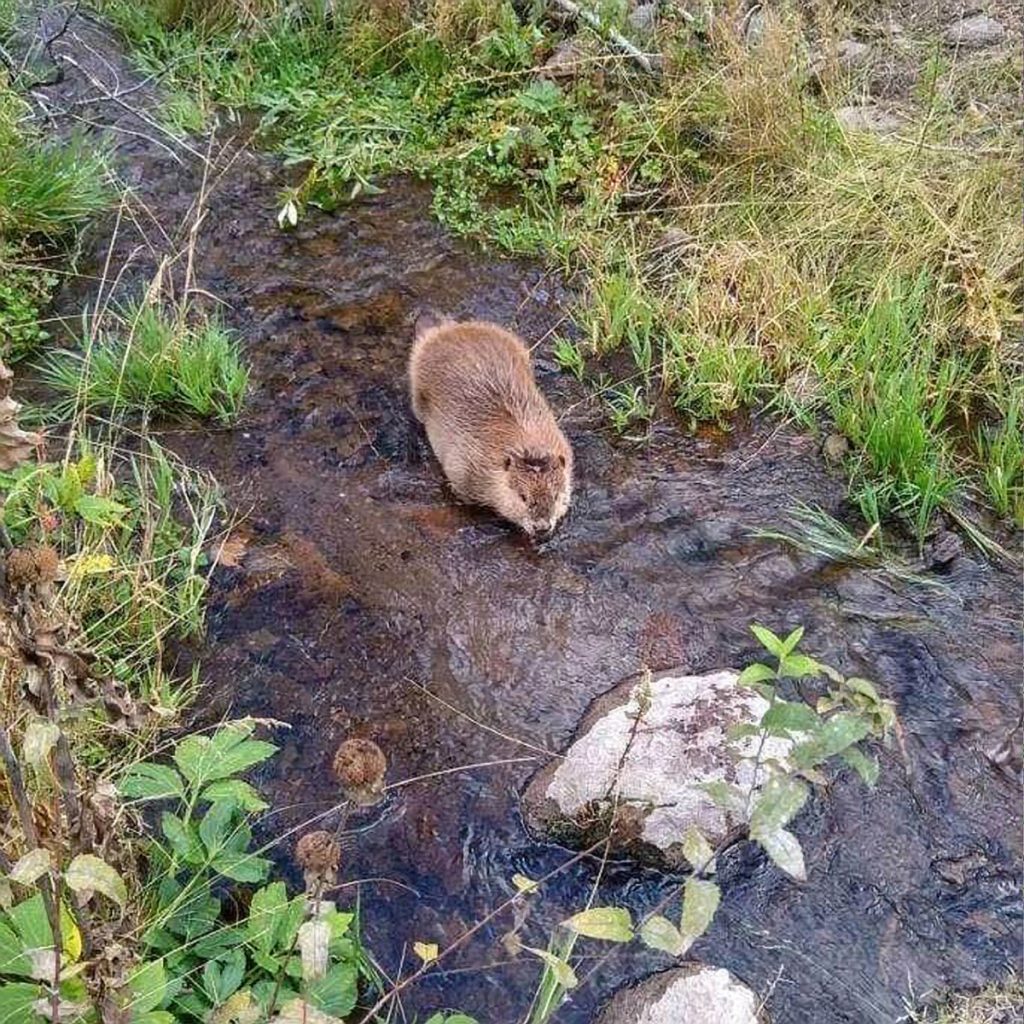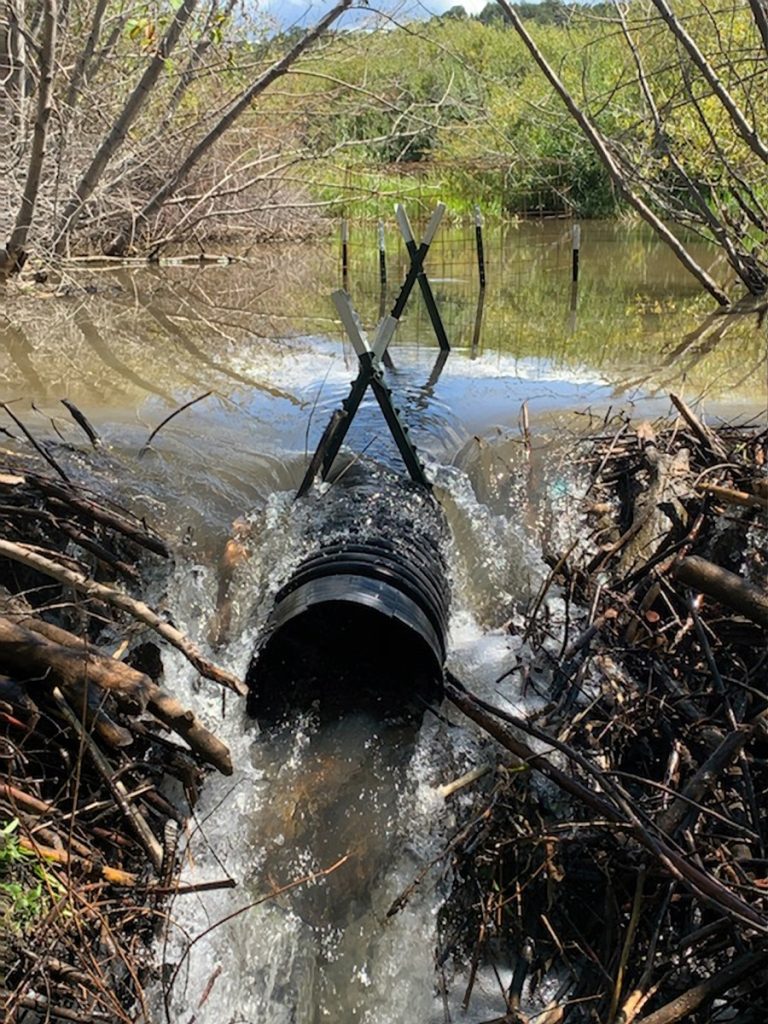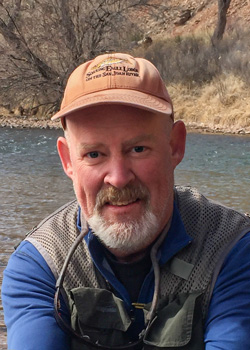
Rio Costilla Beavers: Friend and Foe
The Rio Costilla has certainly had its share of water troubles in the past. Disputes have flared between towns, acequias, and parciantes on both sides of the Colorado line. If that weren’t challenging enough, the watershed has been afflicted by low snowpack and unpredictable monsoons in recent years.
Beavers have been oblivious to their participation in all of this. On the lower Costilla below the main diversion headgate, an array of dams and ponds dominate the floodplain. These dams have played a frustrating role in determining whether people get water to support traditional uses.
Beavers’ ability to create high quality wildlife habitat is well-documented. By capturing peak flows from spring runoff and heavy monsoons, these industrious animals enable all manner of birds, fish, amphibians, and mammals to flourish.
Negative beaver impacts – the cut down trees, inundated fields, roads, and backyards, the acequias plugged with sticks and the water kept from reaching them in the first place – are also well-known. And these problems are real.
Often overlooked, however, are the opportunities for productive coexistence between beavers and human communities. Beaver dams store water upstream of towns, preventing it from racing by without being used in homes and on fields. Their ponds are natural firebreaks that provide the additional services of diffusing the power of and catching debris from potentially destructive floods produced by forest fires.
In Costilla’s case, maximizing the good while minimizing the bad is an achievable goal. During irrigation season, the main dam below the diversion headgate catches whatever scarce water dribbles beyond the structure. That’s good. On the other hand, very little of this water makes it past the dam to feed lower acequias or recharge domestic wells. And during high flows, water spreads to places where it’s not wanted. Not so good.

Several years ago, Leslie Maes, a board member of the Rio Costilla Cattle and Livestock Association (RCCLA), reached out to Trout Unlimited (TU) to discuss beaver issues. Subsequent reconnaissance missions by TU and New Mexico Department of Game and Fish field staff mapped the extent of the beaver complex. In 2020, lessons from these outings were discussed at a meeting of concerned locals, after which Costilla residents Steven Deherrera, Erminio Padilla, CJ Ortiz, Lonnie Roybal, and John Lapin took charge of bringing the Costilla back to life.
Thanks to their collaboration, a pond leveler was installed in the main dam this October. A leveler consists of a 20-foot, 12-inch diameter pipe placed in a notch cut out of the beaver dam and extending into the center of the pond above it. The device acts as a drain, enabling the pond to empty without the beavers noticing (the first-ever leveler was called a “Beaver Deceiver”, a name that has been trademarked by its inventor). The effect is to maintain the beaver pond at a predetermined depth, which the Costilla restoration team decided should be approximately two feet below its previous level. The leveler causes the pond, including its saturated margins, to drain towards the stream channel, yielding water for downstream use.
Rio Grande Return, a statewide restoration organization, installed the leveler and will provide technical services as the project moves forward. Defenders of Wildlife, a national conservation organization, provided funding and mapping expertise for several installations. Last but not least, the Carroll Petrie Foundation provided funding support for these two organizations, along with Trout Unlimited.
“El Rio de la Costilla has brought livelihood and so much more to Amalia, Costilla, Garcia, and surrounding settlements,” says Steven DeHerrera. “Lots of fond memories, and many more issues than just beavers.”
The dream is to extend flows to the state line, which is possible but not easy. More levelers will need to be installed. The stream channel is choked with debris that will need to be removed. The streambed below the highway will need to be raised and reshaped, the goal being to narrow the channel, increase bank water storage, and reduce evaporation.
Community meetings will need to be conducted to assess priorities, determine project costs, and to inform and engage the community. A healthier river will produce more willows and cottonwoods, increasing shade while reducing water temperature and evaporation. Although trout might be enticed to reoccupy the restored river, better habitat might encourage beavers to move into the lower river.
Such a result might not be all bad. Again, beaver activities “charge” stream systems by raising groundwater tables, keeping water in the system instead of letting it escape as quickly as it would through rapid flow and evaporation. Healthy stream zones are essentially sponges. When activated by beavers, they release water in times of drought and store it in times of flood. Ideally, restoration of the Costilla will recreate such a sponge and deliver more reliable water to farms and households.
Efforts are underway to raise funds for what could be an expensive project, though a well-considered beaver strategy will cut costs significantly. Fortunately, for all their faults, beavers work for free.




